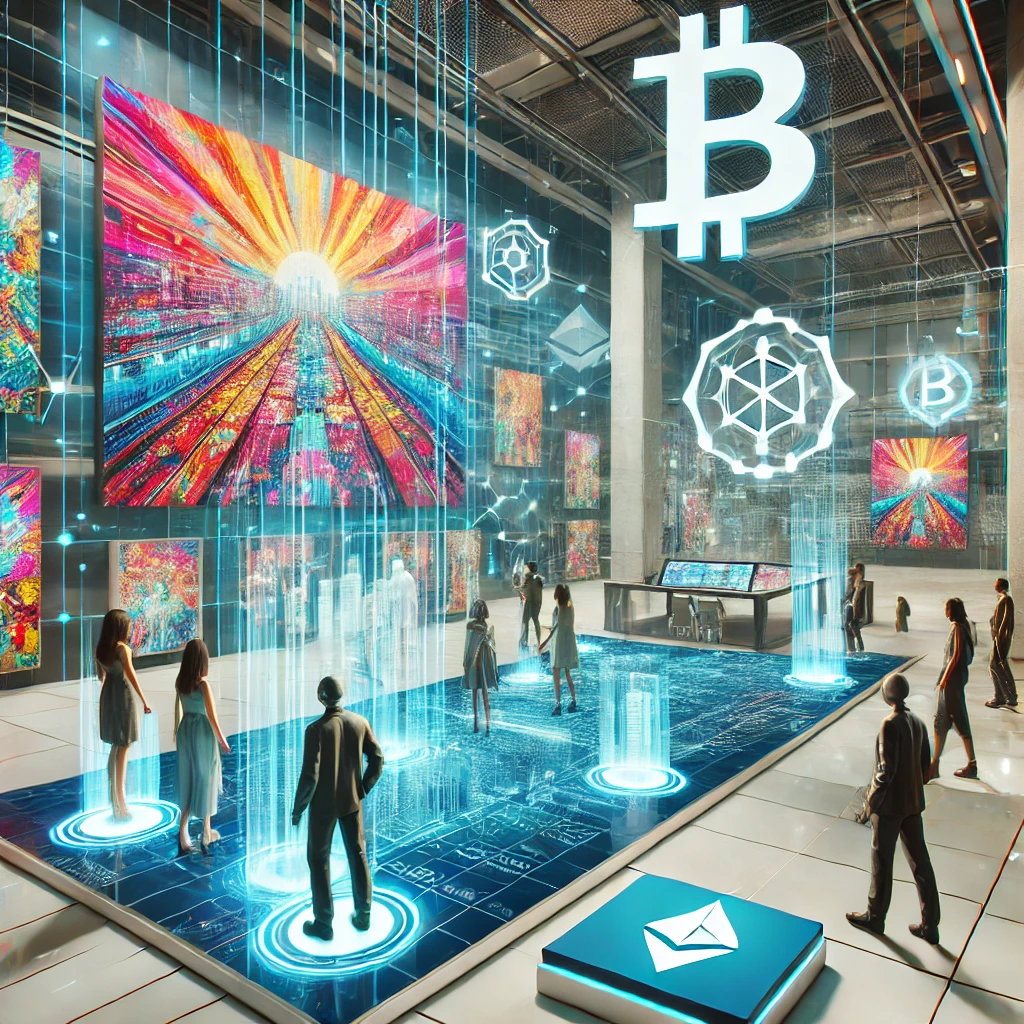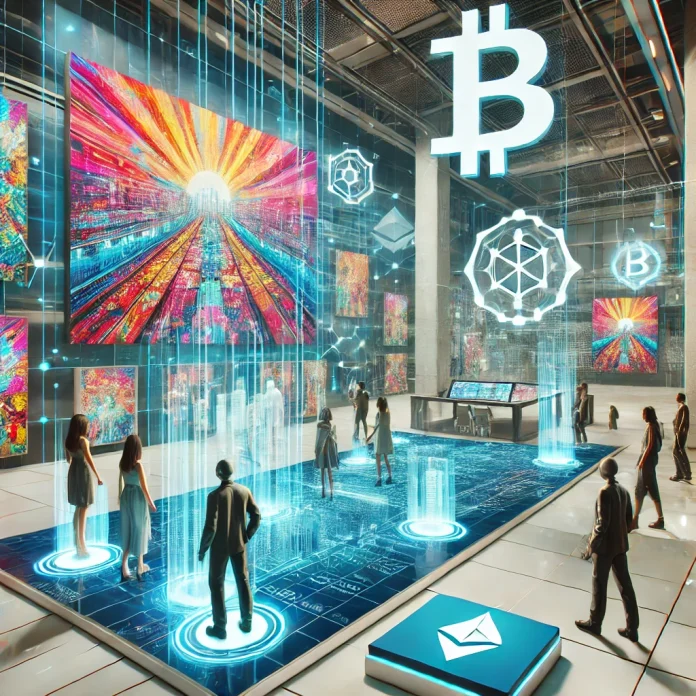The digital art world is experiencing an unprecedented transformation, driven by the emergence of digital art marketplaces. These platforms have not only made art more accessible but have also redefined the way artists create, sell, and share their work. From the rise of NFTs to virtual art galleries, digital art marketplaces are at the forefront of this revolution.
In this blog, we will explore what digital art marketplaces are, their benefits, key platforms to watch in 2024, and how they are shaping the future of art.
What Are Digital Art Marketplaces?
Digital art marketplaces are online platforms where artists can display, sell, and auction their digital creations. These marketplaces cater to various forms of digital art, including illustrations, 3D models, animations, and more.
A significant innovation in this space is the incorporation of blockchain technology, enabling artists to mint their work as NFTs (Non-Fungible Tokens). NFTs verify the authenticity and ownership of digital art, making it possible to trade these pieces like physical artworks.
Why Are Digital Art Marketplaces Popular?
1. Accessibility for Artists and Buyers
Digital marketplaces eliminate geographical barriers, enabling artists worldwide to showcase their work to a global audience.
2. Decentralisation and Ownership
Through blockchain technology, artists retain ownership of their work, receive royalties on secondary sales, and avoid exploitation by middlemen.
3. Diverse Revenue Streams
Digital art marketplaces open new avenues for artists, including auctions, commissions, and collaborations.
4. Emergence of Virtual Galleries
These marketplaces often feature virtual galleries, allowing art lovers to view and purchase works in immersive, interactive environments.
5. Rise of NFTs
NFTs have brought newfound value to digital art, creating a robust market for buying and selling unique pieces.
Top Digital Art Marketplaces to Explore in 2024

1. OpenSea
The largest NFT marketplace, OpenSea offers a vast array of digital art, collectibles, and virtual goods.
Features:
- Easy-to-use interface
- Supports multiple blockchain networks
- Royalties for artists on secondary sales
2. Rarible
Rarible is a decentralised platform where artists can mint and sell their NFTs directly.
Features:
- Community governance
- Flexible royalty settings
- Customisable storefronts
3. Foundation
Foundation is an invite-only platform focusing on high-quality digital art and exclusivity.
Features:
- Curated collections
- Auctions for premium art
- Direct artist-buyer connections
4. SuperRare
SuperRare positions itself as the “Instagram of Crypto Art,” focusing on unique, single-edition artworks.
Features:
- Premium artist roster
- Built-in social features
- Secondary market royalties
5. Nifty Gateway
Nifty Gateway stands out for hosting drops of exclusive digital art by prominent artists and celebrities.
Features:
- Time-limited drops
- User-friendly payment options (including credit cards)
- Collaboration opportunities
How Digital Art Marketplaces Benefit Artists
1. Broader Reach
Artists can connect with collectors globally without the need for traditional galleries.
2. Royalties on Resales
NFT-enabled platforms ensure artists earn a percentage of sales every time their work changes hands.
3. Direct Engagement
Marketplaces foster direct communication between artists and collectors, strengthening relationships and trust.
4. Showcasing Emerging Talent
These platforms provide visibility to emerging artists, levelling the playing field with established names.
5. Creative Freedom
Digital marketplaces embrace diverse styles and mediums, giving artists complete creative autonomy.
Challenges Facing Digital Art Marketplaces
While the rise of digital art marketplaces is exciting, they are not without challenges:
1. Environmental Concerns
Blockchain technology, particularly NFTs, has been criticised for its energy consumption. Efforts are underway to transition to eco-friendly networks like Ethereum 2.0.
2. Copyright Issues
Ensuring authenticity and protecting artists from plagiarism remains a concern in the digital art world.
3. Market Volatility
The NFT market can be unpredictable, with fluctuating demand and pricing.
4. Accessibility Barriers
For some artists, the technical knowledge required to mint NFTs or navigate blockchain systems can be a hurdle.
The Future of Digital Art Marketplaces
Digital art marketplaces are more than a trend—they represent a paradigm shift in the art world. In the coming years, we can expect:
— Integration of Augmented and Virtual Reality: Platforms will offer immersive experiences, allowing collectors to interact with digital art in virtual environments.
— Broader Adoption of Eco-Friendly Blockchains: Sustainability will become a priority, with more platforms adopting green technologies.
— Expansion Beyond NFTs: While NFTs dominate, marketplaces may explore other blockchain-based innovations to diversify offerings.
— Collaboration Across Industries: Partnerships between digital artists and industries like gaming, fashion, and advertising will flourish.
How to Get Started with Digital Art Marketplaces
For Artists:
1. Research platforms and choose one that aligns with your style and audience.
2. Create a digital wallet to manage your funds.
3. Mint your first NFT, ensuring the description and metadata are accurate.
4. Engage with the community to promote your work.
For Collectors:
1. Explore different marketplaces to find pieces that resonate with you.
2. Verify the authenticity of the artist and the NFT.
3. Use a secure wallet for transactions.
4. Consider the long-term value of your purchase.
Final Words
Digital art marketplaces are revolutionising how art is created, sold, and appreciated. By embracing blockchain technology, these platforms offer unparalleled opportunities for artists and collectors alike. Whether you’re an aspiring digital artist or a seasoned collector, now is the perfect time to explore the dynamic world of digital art marketplaces.
Share your thoughts on digital art marketplaces in the comments below. Have you tried buying or selling digital art? Let us know about your experience!



